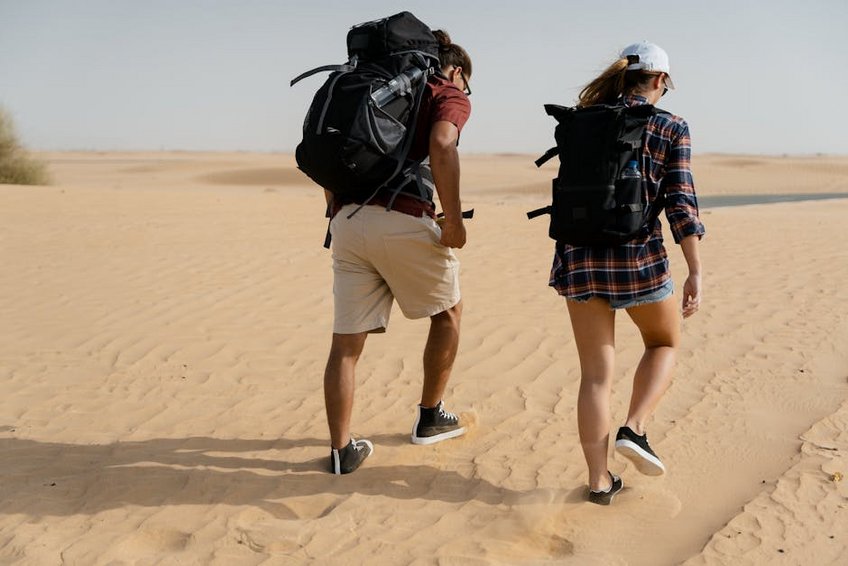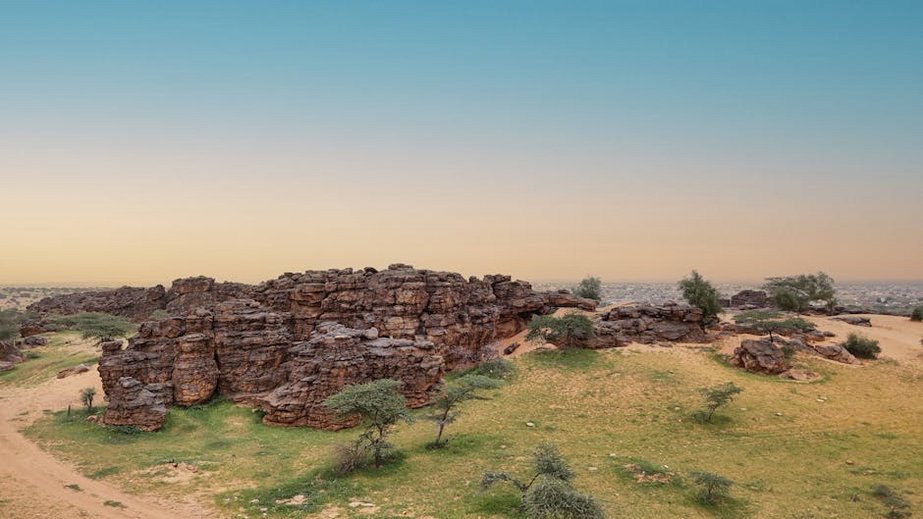Nomadic Life Experience in Mauritania Desert
Imagine waking up to the gentle sounds of camel bells and the first rays of sun painting the endless sand dunes in hues of gold and orange. A nomadic life experience in the Mauritania Desert offers one of the most authentic and transformative travel adventures you’ll ever encounter. This isn’t just tourism; it’s immersion into a centuries-old way of life that has sustained the Saharan people through generations. The vast, untouched landscapes of the Adrar and Tagant regions provide the perfect backdrop for disconnecting from modern life and connecting with something more profound. You’ll discover the rhythm of desert existence, where time moves differently and every moment feels significant. From sharing mint tea with welcoming Moorish families to sleeping under a blanket of stars so clear they seem within reach, this journey will reshape your perspective on simplicity, community, and human resilience. The Mauritania nomadic experience challenges you physically and rewards you spiritually, creating memories that linger long after the desert sands have been brushed from your clothes.
Nomadic Life Experience in Mauritania Desert – Essential Information
Before embarking on your nomadic adventure in the Mauritania Desert, understanding the cultural and practical foundations of this unique experience will significantly enhance your journey. The nomadic tribes of Mauritania, primarily of Moorish (Arab-Berber) heritage, have maintained their traditional lifestyle for centuries, moving across the vast Saharan landscapes with their camel herds in search of pasture and water. You’ll discover that hospitality (“karam” in Arabic) forms the cornerstone of desert culture, where travelers are considered guests sent by God and treated with extraordinary generosity. The desert environment demands respect and adaptation – temperatures can swing from scorching daytime heat to surprisingly cold nights, and the arid landscape requires careful water management. You’ll need to embrace a slower pace of life where schedules give way to natural rhythms dictated by the sun, weather, and animal needs. This cultural immersion offers profound insights into human adaptability and the beauty of simplicity that many modern travelers find life-changing.
Cultural Significance and Historical Context
- The nomadic tradition dates back millennia, with Berber tribes developing sophisticated knowledge of desert survival, astronomy, and animal husbandry that enabled thriving in one of Earth’s harshest environments.
- Islamic influences arrived in the 8th century, blending with indigenous beliefs to create the unique Moorish culture characterized by elaborate social codes, poetic traditions, and distinctive music like the hypnotic tidinit and ardine instruments.
- Traditional gender roles remain distinct but complementary, with women managing camps and crafts while men handle livestock and navigation, though modern influences are gradually creating shifts in these dynamics.
- Budget travelers can expect to spend approximately $80-120 per day including guided tours, basic camping, and meals, totaling around $560-840 for a week-long experience without international flights.
- Mid-range experiences with better equipment, more comfortable camels, and enhanced cultural access typically cost $150-250 daily, totaling $1,050-1,750 for seven days.
- Luxury nomadic experiences featuring premium guides, vehicle support, and enhanced comfort can reach $300-500 per day, especially if including special activities like traditional music performances or extended camel treks to remote areas.
- Official Mauritania Tourism Portal
- Lonely Planet Mauritania Travel Guide
- World Health Organization Mauritania Travel Advice
Essential Desert Survival Knowledge
Your nomadic hosts possess incredible environmental knowledge that has been passed down through generations. They can read subtle signs in the sand to find water sources, predict weather changes by observing animal behavior and cloud formations, and navigate vast empty spaces using stars and dune patterns. You’ll learn basic survival skills like conserving water, protecting yourself from sun exposure, and understanding the desert’s rhythm. The extreme environment demands respect – daytime temperatures regularly exceed 104°F (40°C) in summer while nights can drop to 50°F (10°C) in winter. Sandstorms can arise with little warning, requiring quick shelter setup. Your guides will teach you to recognize the desert’s dangers and blessings, from identifying potentially harmful creatures to finding edible plants and understanding wind patterns that shape the ever-changing landscape.

Nomadic Life Experience in Mauritania Desert – Planning Your Trip
Careful planning transforms your Mauritania desert nomadic experience from a challenging adventure into a smoothly memorable journey. The remote nature of the desert regions means you must consider logistics thoroughly before departure. Most travelers access the nomadic regions through Nouakchott, the capital, then travel overland to desert gateways like Atar or Chinguetti, where reputable tour operators can arrange authentic nomadic experiences. You’ll need to secure a Mauritanian visa in advance, which requires application through embassies or consulates, with processing times varying from a few days to several weeks depending on your nationality. Health preparations should include vaccinations for hepatitis A and B, typhoid, and yellow fever, along with a comprehensive medical kit that treats desert-specific issues like dehydration, heat exhaustion, and minor injuries. Travel insurance that covers remote desert evacuation is absolutely essential, as medical facilities outside major cities are extremely limited.
Best Time to Visit Mauritania Desert
The optimal time for your nomadic life experience in the Mauritania Desert falls between November and February, when daytime temperatures range from a pleasant 75-85°F (24-29°C) and nights remain cool but not freezing. This period avoids the extreme heat of summer (May-September) when temperatures regularly exceed 113°F (45°C), making outdoor activities challenging and potentially dangerous for unacclimated travelers. The winter months also bring clearer skies for stargazing and more comfortable camping conditions. February offers the added bonus of possibly witnessing the Guetna date harvest festival in oasis communities. The shoulder months of October and March are workable but prepare for hotter days. Avoid July and August entirely unless you have significant desert experience, as the combination of extreme heat and potential sandstorms creates difficult conditions even for seasoned nomads.
Budget Planning and Costs
Essential Preparation Checklist
Preparing properly for your Mauritania nomadic experience ensures you can fully immerse yourself in the culture without discomfort or safety concerns. Begin with physical preparation – while camel trekking isn’t extremely strenuous, basic fitness helps immensely with mounting/dismounting and walking on sand. Your packing list should prioritize sun protection: high-SPF sunscreen, wide-brimmed hat, sunglasses with UV protection, and lightweight long-sleeved clothing that covers skin while allowing ventilation. Footwear should include broken-in hiking boots for walking and comfortable sandals for camp. Include a headlamp, power bank for electronics (though charging opportunities are rare), and a journal to record your experiences. Most importantly, bring an open mind and flexible attitude – desert life operates on its own schedule, and embracing this pace is key to a rewarding experience.
Nomadic Life Experience in Mauritania Desert – Top Activities and Cultural Immersion
Your days in the Mauritania Desert will follow rhythms that have remained largely unchanged for centuries, offering activities that connect you deeply with both the environment and the nomadic culture. The centerpiece of most experiences is camel trekking – learning to handle, mount, and care for these magnificent “ships of the desert” that have been essential to Saharan life for millennia. You’ll travel between campsites, sometimes covering 10-15 kilometers daily through stunning landscapes of orange dunes, rocky plateaus, and occasional oasis valleys. Evenings bring cultural immersion around campfires, where you’ll share meals of traditional dishes like méchoui (slow-roasted lamb) or camel meat with couscous, learn to brew sweet mint tea through the elaborate three-serving ritual, and listen to hypnotic traditional music under incredible star-filled skies. The simplicity of desert life creates space for profound connections with your hosts, fellow travelers, and yourself.
Must-See Highlights and Cultural Experiences
Beyond the daily nomadic routines, certain experiences define the essence of Mauritania desert culture. Participating in the preparation of a traditional Bedouin meal offers insight into desert hospitality customs, where every stage from fire-building to serving follows precise traditions. Visiting seasonal camps during the Guetna date harvest (February-March) lets you witness celebration and community cooperation at oasis settlements. Learning basic Arabic or Hassaniya phrases transforms interactions, as even simple greetings in the local language demonstrate respect that opens doors to deeper cultural exchange. The ancient caravan trading posts of Chinguetti and Ouadane, UNESCO World Heritage sites, provide historical context as you explore centuries-old libraries containing priceless Islamic manuscripts. Perhaps most memorable are the silent moments – watching the sunset over endless dunes, listening to wind patterns change, or simply sitting with nomadic families in comfortable silence that transcends language barriers.
Hidden Gems and Local Favorites
While the main tourist routes offer incredible experiences, venturing slightly off the beaten path reveals the Mauritania Desert’s best-kept secrets. The Amogjar Pass features stunning rock formations and ancient caravan inscriptions that few visitors see. Remote oases like Terjit offer natural spring-fed pools hidden in palm groves, perfect for a refreshing swim after days in the dry desert air. Smaller family camps often provide more intimate cultural exchanges than larger commercial operations, where you might be invited to help with animal care or craft traditional textiles. The star-gazing opportunities in the remote desert are arguably among the world’s best, with minimal light pollution revealing the Milky Way with breathtaking clarity. If your timing aligns with local celebrations, you might witness spontaneous music gatherings where ancient poems are sung to rhythmic instrumentation, creating magical evenings that embody the soul of desert culture.
Nomadic Life Experience in Mauritania Desert – Practical Travel Information
Navigating the practical aspects of your Mauritania desert adventure requires understanding the country’s infrastructure and travel realities. Transportation to desert regions typically involves 4×4 vehicles from Nouakchott to gateway towns like Atar (approximately 6 hours) or Néma (8+ hours), followed by camel or foot travel to nomadic camps. Road conditions vary from paved highways to challenging desert tracks, so prepare for bumpy rides and possible delays. Accommodation ranges from basic tent camping under the stars to more structured desert camps with shared facilities – manage expectations as even “luxury” desert camping remains relatively basic by Western standards. Communication is extremely limited beyond towns, with no cell service in remote areas, making advance planning with family and emergency contacts essential. Electricity is scarce, typically limited to vehicle charging or occasional solar setups, so power banks are crucial for camera equipment.
| Category | Options/Features | Price Range (USD) |
|---|---|---|
| Desert Camps | Basic shared tents, communal meals, camel inclusion | $40-80 per night |
| Guided Tours | Multi-day experiences with guides, camels, full support | $100-200 daily |
| Transportation | 4×4 transfers from Nouakchott to desert regions | $150-300 each way |
| Cultural Add-ons | Traditional music performances, special meals, craft workshops | $20-50 per activity |


